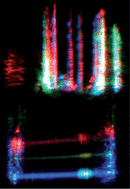Capillary electrophoresis with three-color fluorescence detection for the analysis of glycosphingolipid metabolism
Abstract
A capillary electrophoresis system with an ultrasensitive three-color laser-induced fluorescence

* Corresponding authors
a
Department of Chemistry and Biochemistry, University of Notre Dame, Notre Dame, IN 46556, USA
E-mail:
Norman.J.Dovichi.1@nd.edu
Fax: +1-574-631-6652
Tel: +1-574-631-2778
b Carlsberg Laboratory, Gamle Carlsberg Vej 10, Copenhagen-V, Denmark
A capillary electrophoresis system with an ultrasensitive three-color laser-induced fluorescence

 Please wait while we load your content...
Something went wrong. Try again?
Please wait while we load your content...
Something went wrong. Try again?
R. B. Keithley, A. S. Rosenthal, D. C. Essaka, H. Tanaka, Y. Yoshimura, M. M. Palcic, O. Hindsgaul and N. J. Dovichi, Analyst, 2013, 138, 164 DOI: 10.1039/C2AN36286D
To request permission to reproduce material from this article, please go to the Copyright Clearance Center request page.
If you are an author contributing to an RSC publication, you do not need to request permission provided correct acknowledgement is given.
If you are the author of this article, you do not need to request permission to reproduce figures and diagrams provided correct acknowledgement is given. If you want to reproduce the whole article in a third-party publication (excluding your thesis/dissertation for which permission is not required) please go to the Copyright Clearance Center request page.
Read more about how to correctly acknowledge RSC content.
 Fetching data from CrossRef.
Fetching data from CrossRef.
This may take some time to load.
Loading related content
